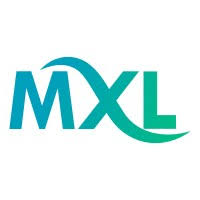
Maxlearnmicrolearning1125
Uploaded on Dec 4, 2024
Microlearning is transforming the way organizations approach employee training, providing an efficient and engaging method for learners to acquire new skills and knowledge in small, digestible chunks. For beginners looking to incorporate microlearning into their learning strategies, understanding the fundamentals is key. This article explores essential tips to help you get started with microlearning and ensure that it delivers maximum impact. What is Microlearning? At its core, microlearning is about delivering content in short, focused sessions that can be completed in a few minutes. These mini-lessons are designed to be consumed on demand, making them perfect for busy employees or learners with limited time. Microlearning can take many forms, including videos, quizzes, infographics, and interactive modules. The goal of microlearning is to make learning more accessible and flexible, allowing learners to engage with content when it's most convenient for them, and retain knowledge for longer periods. Tip 1: Choose the Right Microlearning Platform The foundation of any effective microlearning strategy is a reliable Microlearning Platforms. A robust platform will host and deliver your learning content, track progress, and ensure learners have access to the resources they need. When selecting a microlearning platform, look for features like mobile access, customization options, and seamless integration with existing systems. Microlearning platforms like MaxLearn offer user-friendly features that help organizations create engaging learning experiences. Whether you're looking to host microlearning courses or track learner progress, the right platform can make the process much smoother. Tip 2: Create Engaging Microlearning Content Content is at the heart of microlearning. For beginners, it's essential to create content that is both engaging and focused on specific learning objectives. Use various types of content such as videos, infographics, or quizzes to break down complex concepts into easily digestible pieces. The key is to keep it simple, concise, and relevant to the learner's immediate needs. Microlearning authoring tools and microlearning software can make content creation easier and more effective. These tools enable you to design interactive lessons without the need for advanced technical skills. Look for authoring tools that allow you to build content quickly and customize it to suit your audience. Tip 3: Focus on Short, Targeted Lessons One of the key benefits of microlearning is the ability to focus on one small piece of information at a time. Microlearning courses should be designed to target a single skill or concept, ensuring learners can easily grasp the material and apply it in real-world situations. To get started, aim for lessons that are 5 to 10 minutes long. This ensures that learners can quickly complete them without feeling overwhelmed. It’s essential to remember that microlearning is all about bite-sized learning that fits into a busy schedule. Tip 4: Leverage AI-Powered Learning Tools AI is transforming the learning experience, and AI-powered learning platforms can offer significant benefits for microlearning. These tools can help personalize the learning journey by adapting content based on learner performance. For example, an AI-powered authoring tool can suggest tailored content, recommend relevant courses, and track learner progress, all while ensuring a more individualized learning experience. Using AI in microlearning allows you to optimize the content for better engagement and retention. It also helps identify knowledge gaps, ensuring that learners receive content that is most relevant to their needs. Tip 5: Implement Just-in-Time Learning A major advantage of microlearning is the ability to deliver content when it's most needed. Microlearning Applications can provide learners with quick access to specific knowledge, tools, or resources at the point of need. This approach, known as just-in-time learning, helps employees find solutions to problems immediately, making it ideal for workplace training. For instance, if an employee faces a technical issue, they can access a microlearning course or tutorial on their mobile device to solve the problem without delay. This improves productivity and reinforces learning in a real-world context. Tip 6: Track Progress with a Microlearning LMS A microlearning LMS (Learning Management System) is an essential tool for tracking learner progress, analyzing engagement, and optimizing the learning experience. By using an LMS, you can monitor how well learners are completing microlearning courses, identify areas where they may be struggling, and adjust content to improve outcomes. An LMS designed for microlearning platforms provides valuable insights into learner behavior, helping you refine and enhance your training strategy. Look for an LMS that integrates with other tools you’re using and provides detailed analytics. Tip 7: Continuously Evaluate and Improve Finally, it’s crucial to continuously assess the effectiveness of your microlearning strategy. Gather feedback from learners, monitor completion rates, and review how well the content is meeting learning objectives. Based on this information, make adjustments to improve the content, delivery, and overall experience. With the right tools, such as microlearning platforms, AI-powered authoring tools, and microlearning software, you can ensure your learning content is always evolving and meeting the needs of your audience. Conclusion For beginners, the world of microlearning can seem overwhelming at first, but with the right approach, it offers powerful opportunities for creating engaging, flexible, and impactful learning experiences. By choosing the right platform, creating targeted content, leveraging AI-powered tools, and continuously evaluating your strategy, you can unlock the full potential of microlearning. MaxLearn provides the resources, tools, and support needed to design and implement an effective microlearning platform for your organization.

Comments